Radial head arthroplasty
1. General considerations
Select the right prosthesis size to avoid over stuffing or under sizing of the radiocapitellar joint which can limit range of motion (too large and/or long prosthesis) or elbow instability (too small and/or short prosthesis).
For comminuted radial neck fractures, determining the correct length of prosthesis may be difficult. Comparison with an x-ray of the opposite (intact) elbow may be helpful for preoperative planning.
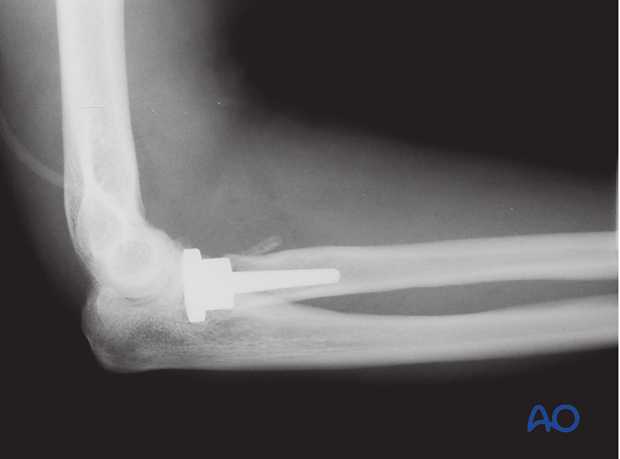
2. Positioning and approach
Positioning
This procedure is normally performed with the patient in a supine position for lateral access.
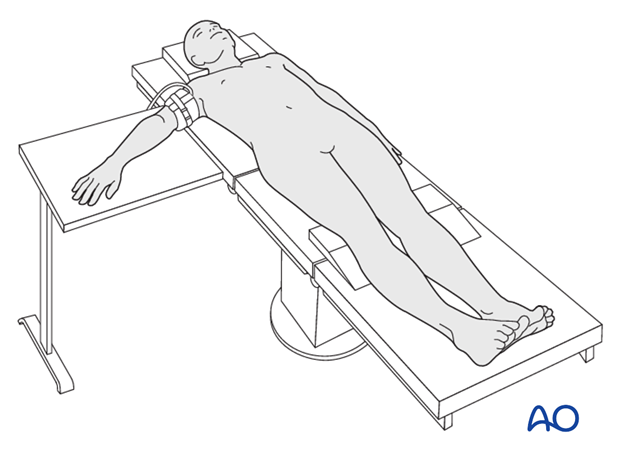
Approach
For this procedure a lateral approach is normally used.
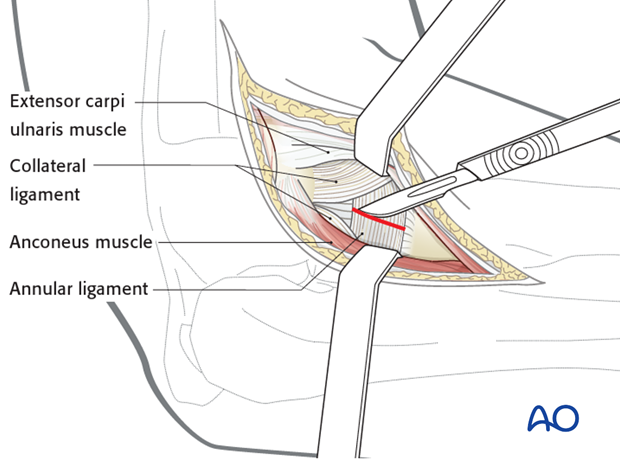
3. Resection of the proximal radius
Resect radial head and neck fragments
Carefully resect all radial head and neck fragments. Preserve the annular ligament for repair, if possible.
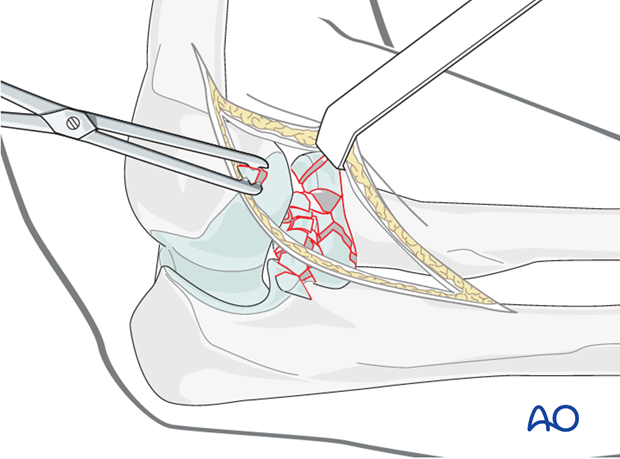
Trim the radial neck
Trim the radial neck to fit the prosthesis with a small rongeur.
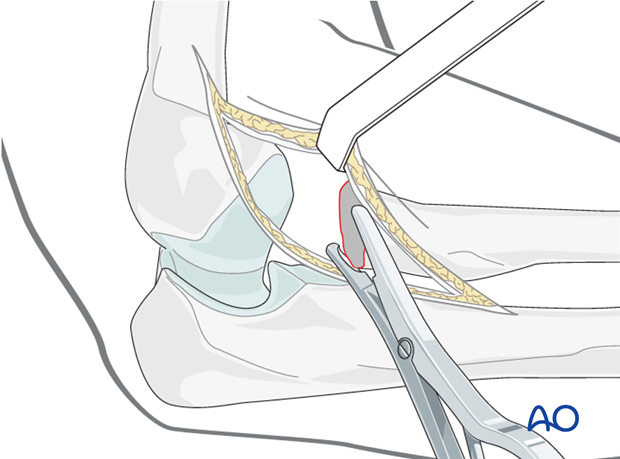
4. Replacement
Opening the medullary canal
Carefully open the medullary canal with an awl to fit the prosthesis stem.

Sizing of the prosthesis
Reconstruct the radial head and neck with the excised fragments to identify the appropriate diameter and length of prosthesis. If the size of the native radial head is in between available prosthetic sizes, select the smaller one.
Insert the chosen prosthesis. Assess its length and stability.
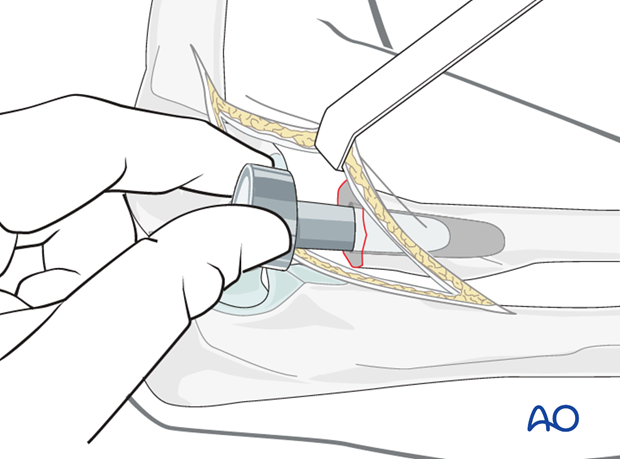
To avoid lengthening and overstuffing of the radiocapitellar joint, or shortening and instability, the prosthesis should fit as follows:
- The articular surface of the radial head prosthesis should be at the level of, or slightly proximal to the lateral edge of the coronoid articular surface.
- Check tracking of the prosthesis in flexion, extension, pronation and supination. Check elbow stability. If the elbow is too stiff or too unstable, change the size of the prosthesis accordingly.
- Check the contralateral wrist with fluoroscopy and compare it to the wrist of the involved arm.
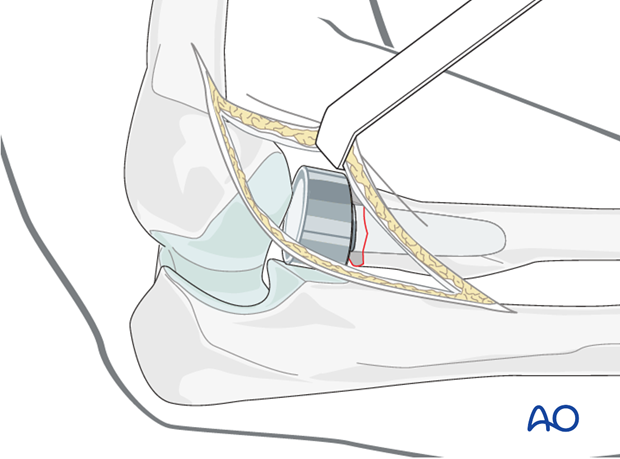
Ligament repair
If the annular ligament is ruptured, repair it with non-absorbable sutures.
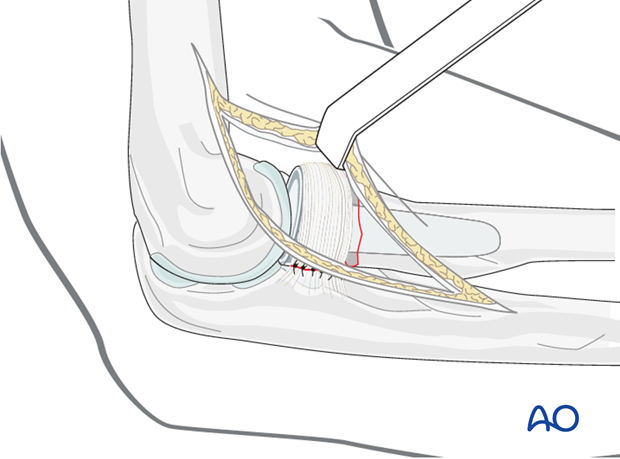
5. Aftercare following arthroplasty
For aftercare and rehabilitation following arthroplasty please refer to your local protocol.













